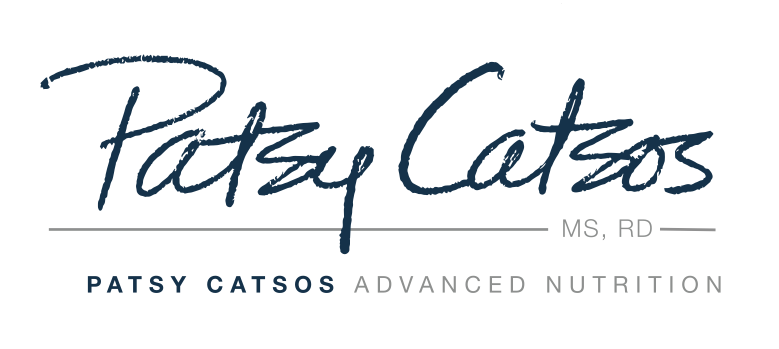We ask an awful lot of our snacks. A snack should be healthy. A treat. Low in sugar. High in protein. Chocolate. Easy. Quick. Attractive. Taste great. Crispy. Chewy. Creamy. Salty. Spicy. Affordable. Homemade. Pre-packaged. Nutrient-rich. I think you see where I'm going with this. No one food checks all of these boxes, right? We may not even agree on what a "snack" is! To me, a snack is a combination of how, what and when.
Picture these filled with your favorite snacks, ready to grab and go!
How: I think the most defining characteristic is that a snack is ready to eat. It is something prepared ahead of time, by you or someone else, that can be enjoyed easily no matter where you are. Snacks are often finger food. A supply of small food boxes or canning jars will help you keep portions of food at the ready, for eating at home or bringing to work or school. An insulated lunch bag or small cooler is another tool that will promote good low-FODMAP snacking. Or, if your workplace has a refrigerator, pack your snacks in once a week, on Monday morning.
What: Think here about your own nutrition priorities. The same snack food cannot be all things to all people.
Prepared fresh vegetables will help you up your nutrition game overall. Bell peppers, carrots, cucumbers and cherry tomatoes are popular for eating raw. They pack well in a small cooler, too. Dip them in homemade low-FODMAP hummus or baba ganoush for a delicious treat. If you prefer cooked vegetables, leftover roasted vegetables are easily eaten out of hand.
Speaking of roasting, make yourself a batch of the Roasted Chick Peas featured in this post (below). Kale chips are fun to make, too.
Small tins or packets of peanuts, walnuts, pecans or macadamia nuts are a tasty way to get yourself some healthy fat and a little fiber. You can decide whether you like your nuts sweet, salty, spicy or chocolatey. Stick with just a handful of nuts to keep it real (and low FODMAP).
Packets of instant oatmeal. Not gourmet, but quick and easy to make with just boiling water and hits the spot on cold winter mornings.
Old school? How about some canned pineapple with lactose-free cottage cheese? This was a favorite after-school snack of mine when I was a kid.
Peanut butter on half a banana is another oldie-but-goodie.
Hard boiled eggs are a classic. The USDA says they are safe to hold at room temperature for up to two hours if necessary.
Got a blender? Whip up a smoothie before you leave home and bring it with you in an insulated thermos. Smoothies are great vehicles for adding more fruits, vegetables and protein to your diet, and you can use them as a stealthy meal when it might be otherwise awkward to eat on the job, while driving, or at school.
A small carton of lactose-free yogurt with some walnuts and 1/2 cup of blueberries or raspberries is a tasty snack.
See IBS-Free Recipes for the Whole Family and the Flavor without FODMAPs Cookbook for more great snack ideas (sidebar).
When: Meal pattern is important on a low-FODMAP diet. Three moderately sized meals per day are best for most people with IBS. Your intestines need to be empty at intervals during the day so that you can benefit from cleansing waves in the small bowel known as migrating motor complexes (MMCs). These are especially important if you have small intestinal bacterial overgrowth. Avoid a grazing meal pattern (eating semi-continuously throughout the day). Snacking for a healthy IBS tummy should be limited to once or twice a day. If this poses a problem with getting enough to eat, meet with a registered dietitian for some help.
Roasted Chick Peas
Roasted chick peas are delicious. Serve them as a snack or on a green salad.
Ingredients:
16-oz. can chick peas, drained and rinsed
1 tablespoon extra virgin olive oil or garlic oil, divided
¼ teaspoon sea salt
¼ teaspoon fresh-ground black pepper
½ teaspoon dried rosemary, crushed
¼ teaspoon thyme
¼ teaspoon smoked sweet paprika
Procedure:
Looking for a salty, chewy, high-fiber, low-FODMAP snack? Try these roasted chick peas.
Preheat oven to 425°. Line a roasting pan with foil or parchment paper (optional for easy cleanup) and set aside.
Drain and rinse chick peas, then pat dry between two layers of paper towels, which will help the olive oil stick to them. Transfer them to a bowl, drizzle with 1 tablespoon of olive oil, and stir them gently to coat.
Arrange the chick peas close together in a single layer on the prepared pan. Sprinkle them with the seasonings, spread them out on the pan and roast them for 15-20 minutes, or until chick peas look a little shrunken and are starting to brown. Half-way through the cooking period, shake the tray gently to roll the chick peas around, then return to the oven.
Cool on the tray before serving. Roasted chick peas will keep for a few days, refrigerated in an airtight container, but the chewy texture is best the day they are made, so make this snack when you can share it with others at a cocktail party, picnic or after school.
Serves: 6
For a printable PDF version of this recipe, click here.
If you enjoyed this post, be sure to sign up for The IBS-Free Digest, my newsletter. We deliver the keys to IBS-free living.
This page may contain affiliate links. We are a participant in the Amazon Services LLC Associates Program, an affiliate advertising program designed to provide a means for us to earn fees by linking to Amazon.com and affiliated sites.
First published Jan 29, 2017. Edited and republished Jan 19, 2024.



